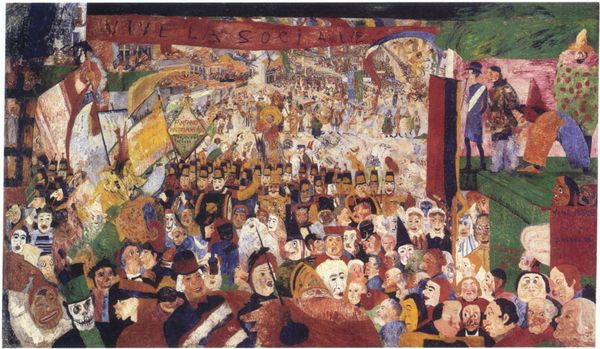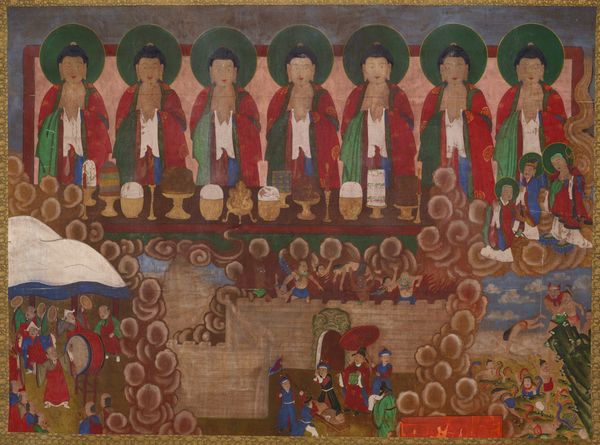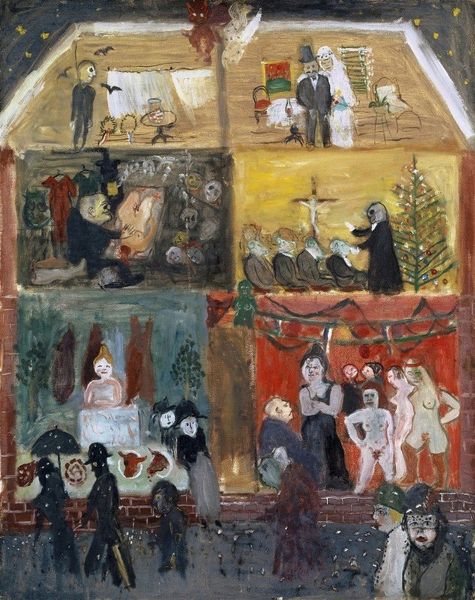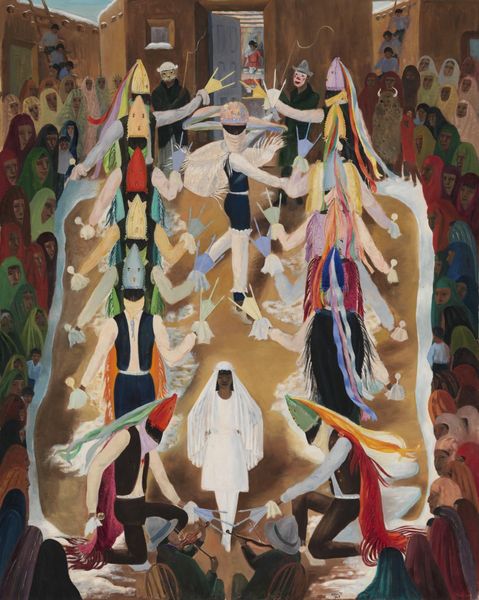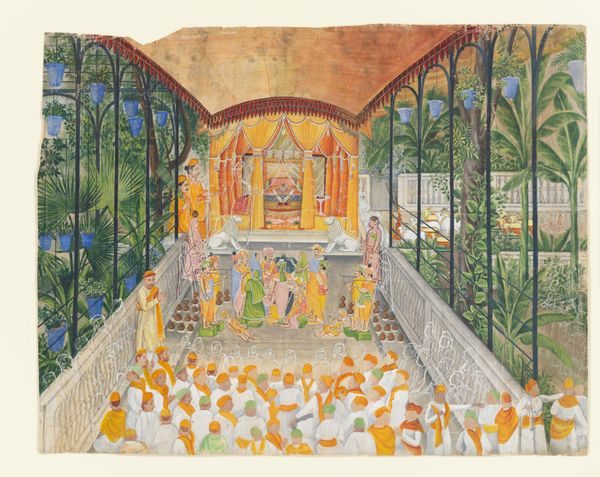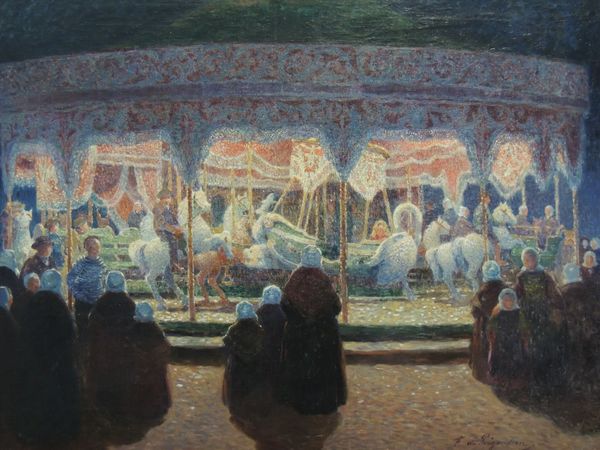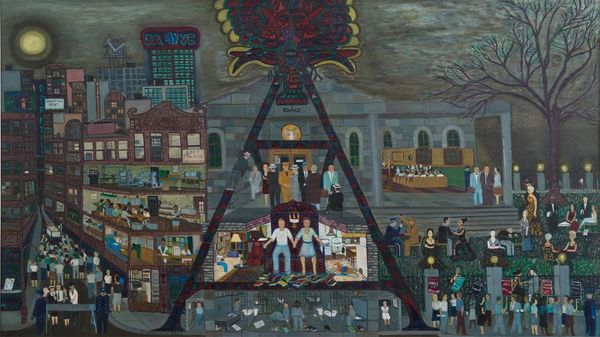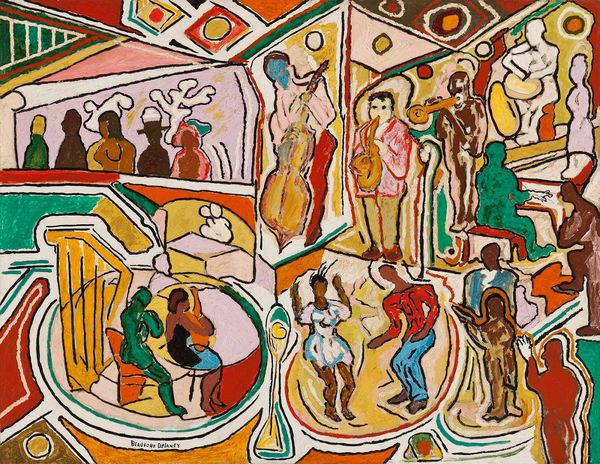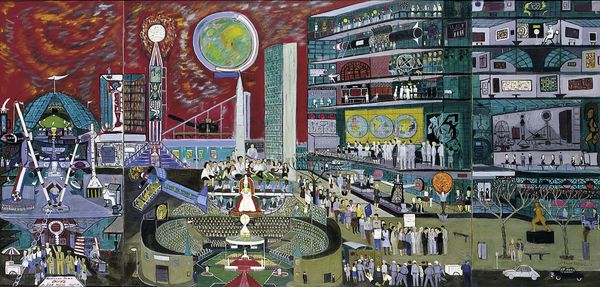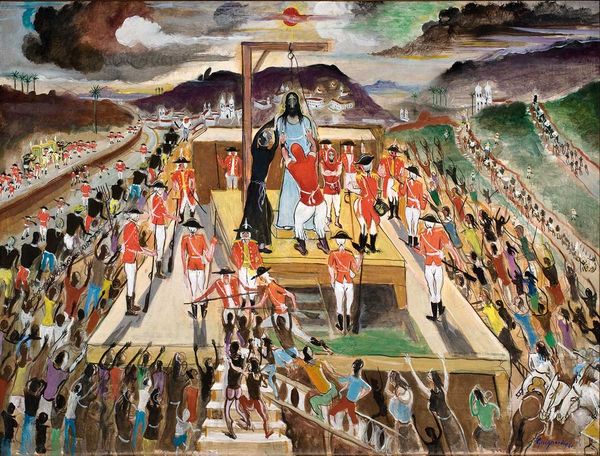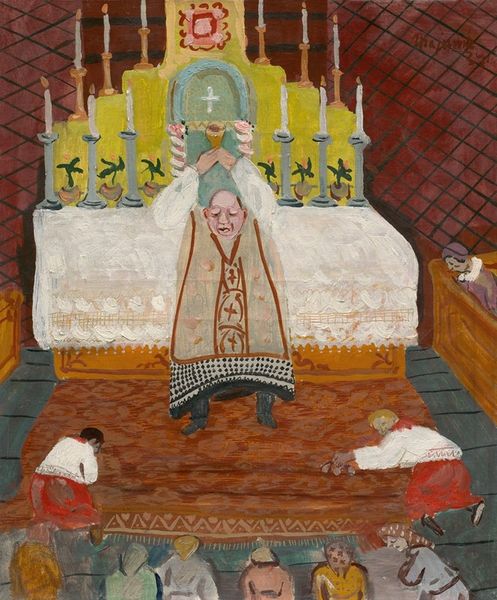
oil-paint
#
oil-paint
#
landscape
#
social-realism
#
oil painting
#
group-portraits
#
naive art
Copyright: Ralph Fasanella,Fair Use
Curator: I’m immediately struck by the unsettling feeling that permeates this otherwise celebratory-looking scene. The murky palette coupled with the stylized figures gives off an almost sinister vibe. Editor: Well, let's contextualize that initial impression. This is Ralph Fasanella’s "McCarthy Era Garden Party" from 1954, rendered in oil paint. Looking closely, you see a scene filled with both lavish celebration and protesting figures, all framed within this almost surreal landscape. Curator: The surface itself appears built up, layers upon layers, giving the piece a tactile quality. The density echoes the palpable tensions of the era it depicts, the anxieties worked directly into the materials. I find that fascinating; the physical properties mirroring the subject matter. Editor: Precisely! Think about the socio-political context—the height of McCarthyism, a period marked by intense anti-communist suspicion and persecution. The demonstration right outside this high-society party explicitly politicizes themes of class, power, and oppression within postwar American life. Fasanella really captures the stark class divide and political unease roiling beneath the surface. The protesters carry signs advocating civil liberties, demanding justice against what they viewed as unjust political persecution. Curator: Notice how Fasanella contrasts the flat, almost folk-art style depiction of the masses with the elevated banquet table. The figures seated are much more detailed and refined, set against what looks like a surreal greenhouse. The formal garden—it’s literally built on top of what? A political undercurrent. That’s where I think the genius lies: turning something deceptively bucolic into a pressure cooker of dissent and conformity. Editor: And we need to look at Fasanella himself. His working-class background deeply informed his perspective. He transformed the traditional perception of artistic labor, embracing an ethos deeply entrenched in working-class resistance. His pieces use “naïve art” to explicitly challenge elites. It also prompts a deep reflection on collective memory, urging engagement with parts of history that have frequently been suppressed. Curator: Indeed. This artwork underscores art's role in not merely reflecting the political landscape but engaging actively in its reinterpretation. The manipulation of material becomes inherently critical. Editor: Absolutely. Reflecting on it now, “McCarthy Era Garden Party” is a striking visualization of social friction, inviting us to interrogate historical silences and the continuing quest for equality.
Comments
No comments
Be the first to comment and join the conversation on the ultimate creative platform.
